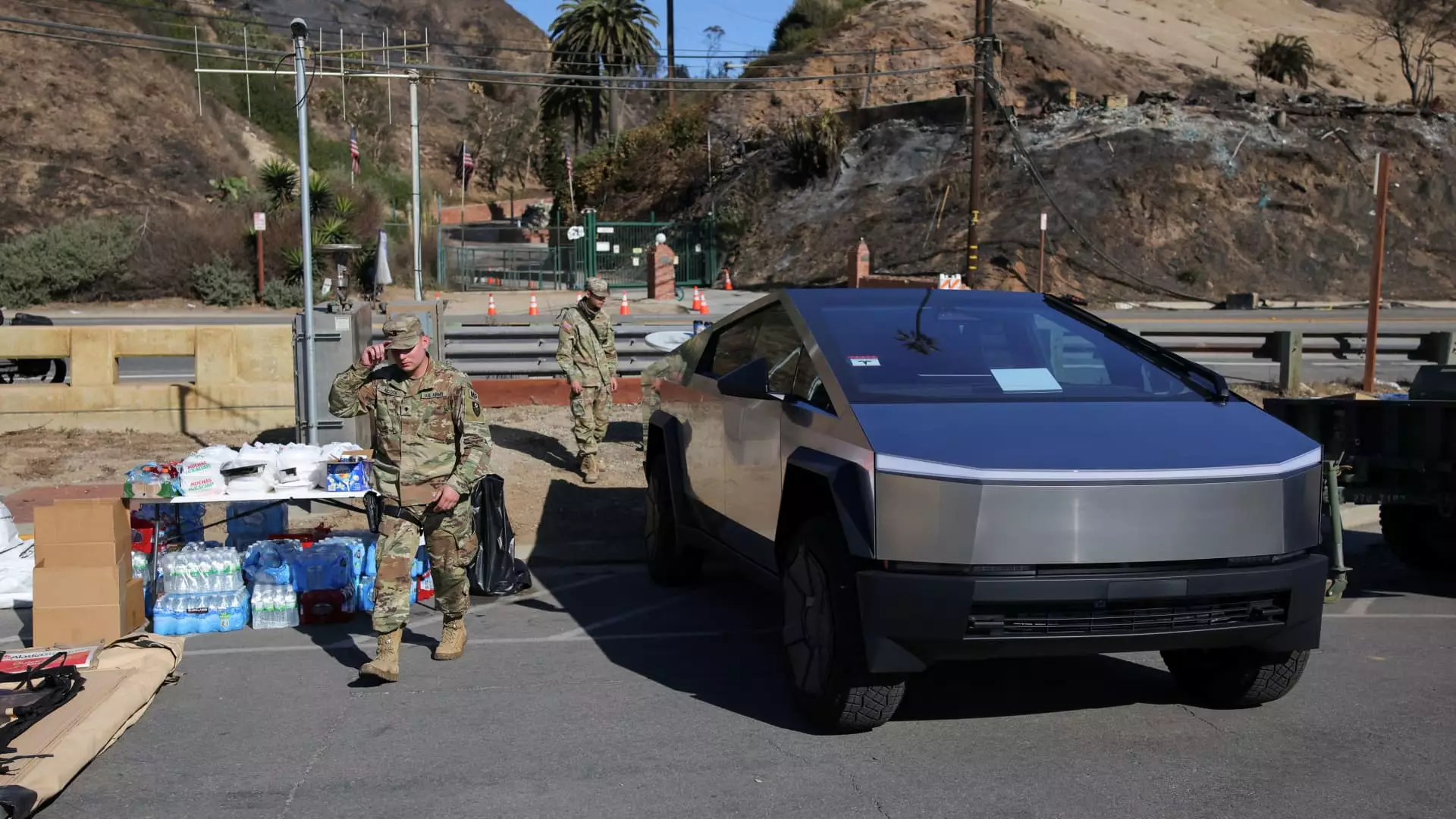This week, Tesla has initiated a new strategy to attract buyers for its Cybertruck, which has recently been listed with discounts that reach up to $1,600 on new vehicles. The promotional pricing seems to be a direct response to increasing inventory levels and production slowdowns at the company’s Austin, Texas factory. While these discounts may seem like a clever marketing maneuver, they also spotlight underlying issues that Tesla is currently grappling with. With demo models seeing discounts as high as $2,600, it raises questions about consumer interest and the demand for this unconventional vehicle.
Ever since the Cybertruck’s highly publicized unveiling by CEO Elon Musk in 2019, expectations have been set sky-high. Initially projected to carry a starting price tag of approximately $40,000, the Cybertruck’s actual base price in the U.S. has ballooned to around $80,000. Although Tesla had hopes that this distinctive model would serve as a significant growth driver, the journey has not been smooth. Reports indicate that production issues and repeated recalls, including a sixth recall in a single year due to defective drive inverters, have hampered the vehicle’s market momentum.
In a landscape marked by escalating competition, the Cybertruck has struggled to achieve the sales figures initially expected. Whilst it outsold competitors like the Ford Lightning F-150 last year, it also faced difficulties. The broader EV market has experienced substantial growth, with sales reaching an estimated 1.3 million units in 2024—a remarkable increase of 7.3% from the previous year. However, Tesla’s own sales figures tell a contrasting story, with a reduction of close to 37,000 vehicles sold. The dominant Tesla Model Y and Model 3 continue to reign as best-sellers, but both of these more affordable models have also seen sales declines.
In addition to product challenges, Musk has faced customer backlash regarding delivery delays, specifically in California. In a recent communication via social media, he expressed regret over these setbacks, explaining that certain Cybertrucks were being repurposed to support communities affected by wildfires by providing power and connectivity through Starlink Internet services. This dual role of the Cybertruck as both a consumer vehicle and a reliable emergency resource reflects Tesla’s commitment to adapting to pressing societal needs, even amidst commercial hurdles.
As Tesla continues to navigate these complex market dynamics, the Cybertruck will undoubtedly serve as a litmus test for the company’s strategic pivots. Will the discounting strategy succeed in revitalizing interest, or do these price reductions reflect deeper systemic issues? While Tesla has previously led the EV market, the rising tide of competitors coupled with operational challenges could redefine the landscape significantly. Moving forward, it remains to be seen whether Tesla can maintain its foothold while ensuring that its innovative products meet consumer expectations and deliver operational success. This journey of adaptation is crucial as the company seeks to solidify its position in an ever-evolving automotive industry.

Leave a Reply